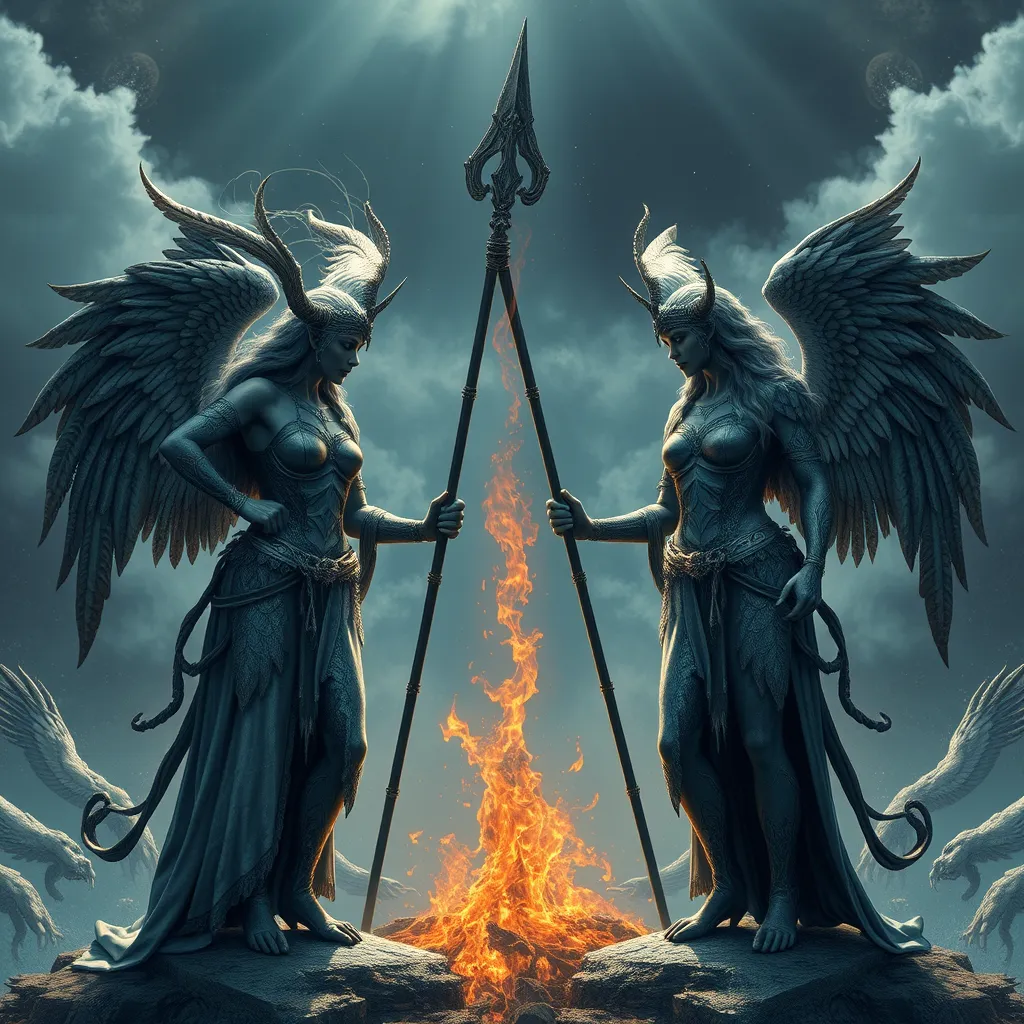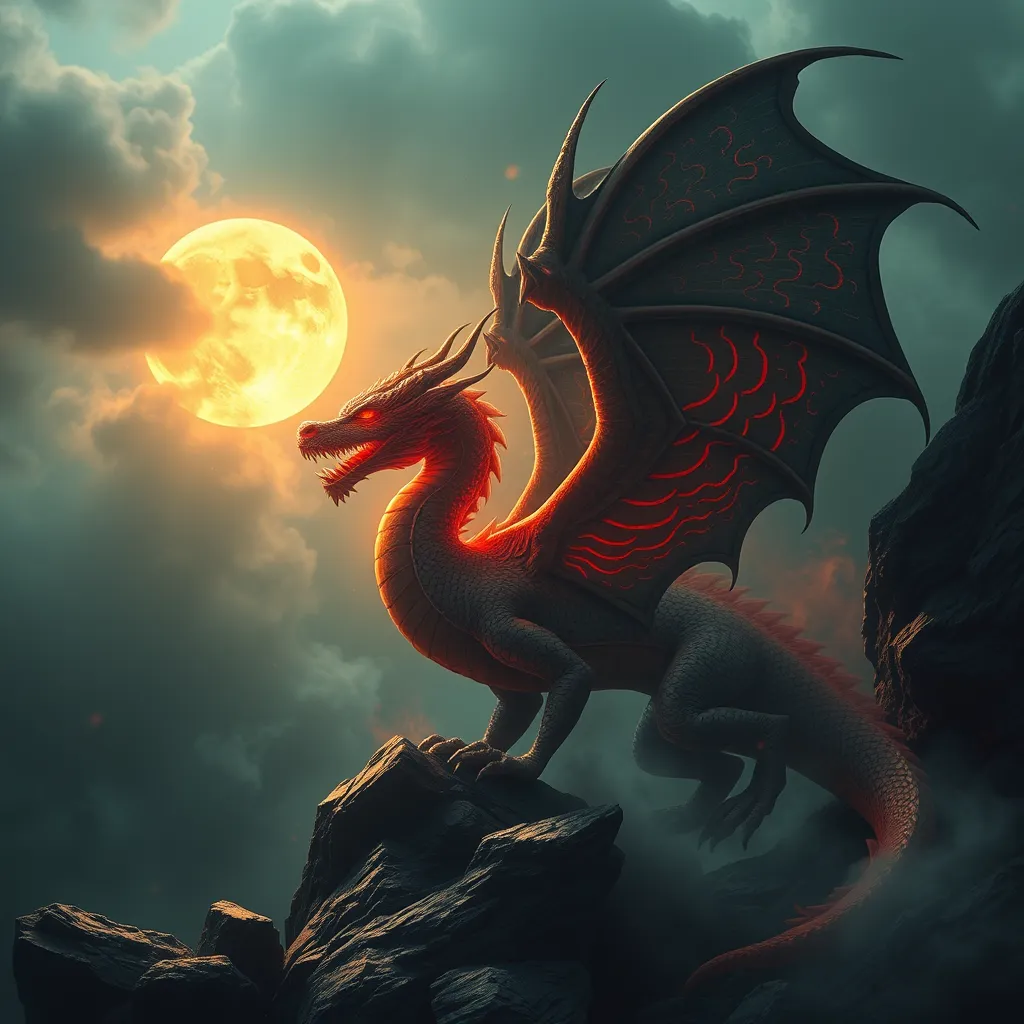The Valkyries and the Harpies: Similarities and Differences in Norse and Greek Mythology
I. Introduction
The Valkyries and Harpies are two intriguing figures that emerge from Norse and Greek mythology, respectively. These mythological beings embody different cultural values and beliefs, yet they share certain similarities in their roles as agents of fate and death. This article aims to explore the characteristics, roles, and cultural significance of the Valkyries and Harpies, shedding light on how these figures reflect the societies from which they originate.
II. Origins and Cultural Context
A. Historical background of Norse mythology and the Valkyries
Norse mythology is rich with tales of gods, heroes, and mythical creatures, originating from the ancient Scandinavian cultures. The Valkyries, often depicted as warrior maidens, are associated with the god Odin and serve a crucial role in determining the fates of warriors in battle. Their primary function is to choose those who will die and those who will live, guiding the slain to Valhalla, Odin’s hall of the slain.
B. Historical background of Greek mythology and the Harpies
In contrast, Greek mythology is characterized by a pantheon of gods, goddesses, and legendary heroes, with narratives that often explore themes of morality, justice, and retribution. The Harpies are winged spirits known for their swift flying and often serve as personifications of storm winds. They are frequently depicted as agents of vengeance, punishing those who offend the gods or transgress moral boundaries.
C. The role of each figure within their respective cultures
Both the Valkyries and Harpies played significant roles within their mythological frameworks. The Valkyries symbolize the noble aspects of death and valor, guiding lost souls to the afterlife. Conversely, the Harpies embody punishment and retribution, representing the consequences of human actions against divine will.
III. Characteristics and Roles
A. Description of the Valkyries: Appearance, abilities, and functions
The Valkyries are typically portrayed as beautiful, fierce maidens, often adorned in armor and equipped with weapons. Their abilities are not merely physical; they possess the power to alter the fates of men in battle. Valkyries ride through the skies on horseback, choosing the bravest warriors who have fallen in combat to escort to Valhalla.
B. Description of the Harpies: Appearance, abilities, and functions
The Harpies are often depicted as half-women, half-birds, embodying a fearsome and chaotic nature. They possess the ability to fly at incredible speeds, making them swift agents of punishment. Their primary role is to torment those who have wronged the gods, often snatching away food or delivering messages of divine retribution.
C. Key responsibilities and roles in their mythological narratives
- Valkyries: Choose the slain warriors, serve Odin, and bring them to Valhalla.
- Harpies: Act as agents of vengeance, punish wrongdoers, and carry out the will of the gods.
IV. Symbolism and Representation
A. Symbolic meanings of the Valkyries: Death, battle, and fate
The Valkyries symbolize a noble aspect of death, representing honor in battle and the warrior spirit. They are often associated with fate, serving as both guides and arbiters of who is deemed worthy to enter Valhalla.
B. Symbolic meanings of the Harpies: Wind, vengeance, and punishment
The Harpies symbolize the destructive forces of nature and divine vengeance. They represent the consequences of hubris and moral transgressions, serving as a reminder of the gods’ power and the importance of adhering to societal norms.
C. The impact of these symbols on their respective mythologies
These symbols have profound implications within their mythologies. The Valkyries’ association with honor and valor reinforces the cultural values of the Norse people, while the Harpies’ embodiment of vengeance reflects the Greek understanding of justice and retribution.
V. Relationships with Gods and Mortals
A. The Valkyries’ relationships with Odin and the fallen warriors
The Valkyries maintain a close relationship with Odin, who commands them to select the greatest warriors for Valhalla. Their interactions with fallen warriors are characterized by reverence and respect, as they honor the bravery and sacrifice of those who have died in battle.
B. The Harpies’ relationships with gods like Zeus and mortals
In Greek mythology, the Harpies often serve the will of the gods, particularly Zeus. Their relationships with mortals are typically antagonistic, as they are dispatched to punish those who have incurred divine wrath, illustrating the gods’ authority over human affairs.
C. Comparisons of their interactions with the divine and human realms
While the Valkyries act as benevolent figures guiding souls to a place of honor, the Harpies are often seen as malicious and punitive. This contrast highlights the differing cultural attitudes toward death and divine justice in Norse and Greek traditions.
VI. Myths and Legends
A. Notable myths involving Valkyries: Selection of warriors and Valhalla
One of the most famous myths involving Valkyries is the story of the Battle of Ragnarok, where they play a crucial role in choosing the slain warriors who will fight alongside the gods. Their presence in Valhalla emphasizes the valor and honor of the fallen.
B. Notable myths involving Harpies: The theft of the food of the blind seer and other tales
In Greek mythology, the Harpies famously appeared in the tale of Phineas, where they were sent by Zeus to torment the seer by stealing his food and leaving him in despair. Their actions highlight their role as agents of divine punishment.
C. Analysis of the narrative functions of both figures in their stories
Both the Valkyries and Harpies serve critical narrative functions within their myths, with the Valkyries embodying honor and valor while the Harpies represent retribution and chaos. Their stories reflect the values and beliefs of their respective cultures, emphasizing the consequences of actions and the importance of bravery.
VII. Artistic Representations and Modern Interpretations
A. Depictions of Valkyries in art, literature, and popular culture
The Valkyries have been depicted in various forms of art, from medieval manuscripts to modern films and literature. They are often portrayed as strong, independent figures, symbolizing female empowerment and the warrior spirit.
B. Depictions of Harpies in art, literature, and popular culture
The Harpies have also found their way into artistic representations, often depicted as fearsome creatures in classical art and literature. In modern interpretations, they are sometimes reimagined as complex characters, showcasing their dual nature as both avengers and tormentors.
C. Contemporary interpretations and the relevance of both figures today
Both Valkyries and Harpies continue to resonate in contemporary culture, serving as powerful symbols in discussions of gender, morality, and the nature of justice. Their enduring legacy reflects the universal themes found in mythology, making them relevant to modern audiences.
VIII. Conclusion
In summary, the Valkyries and Harpies serve as fascinating representations of the values and beliefs of Norse and Greek cultures, respectively. While they share similarities in their roles as agents of fate and death, their differences highlight the distinct cultural narratives surrounding honor, vengeance, and divine justice. Studying these figures deepens our understanding of mythology and its impact on human culture, illustrating how these ancient stories continue to shape our views and interpretations today.



